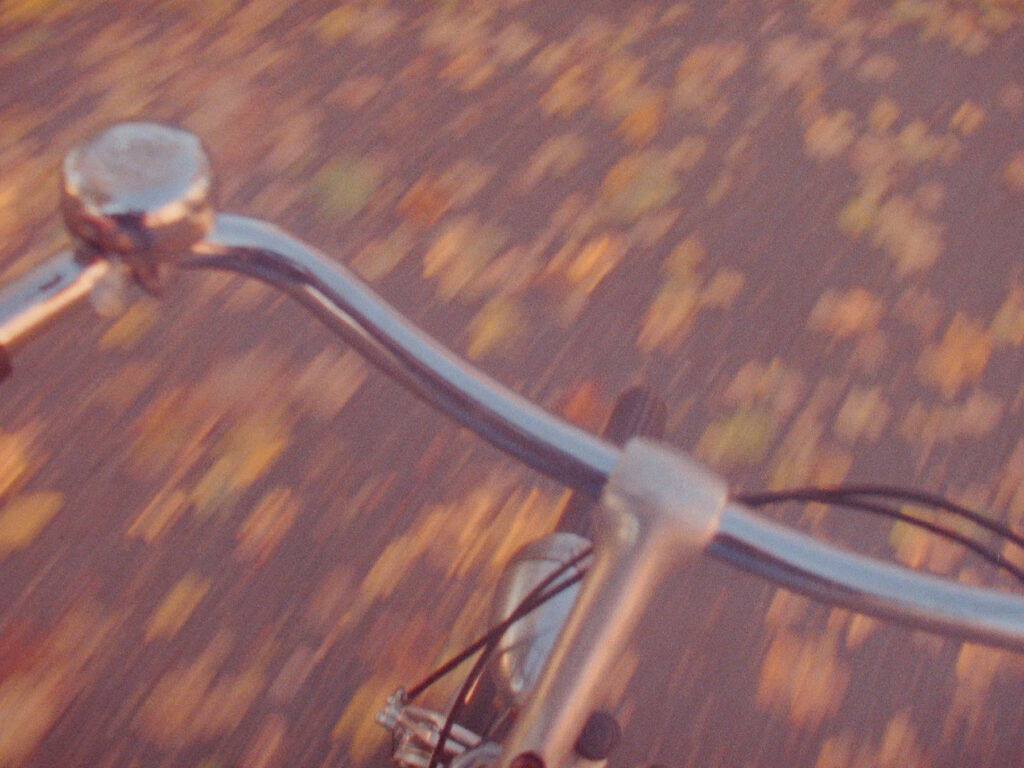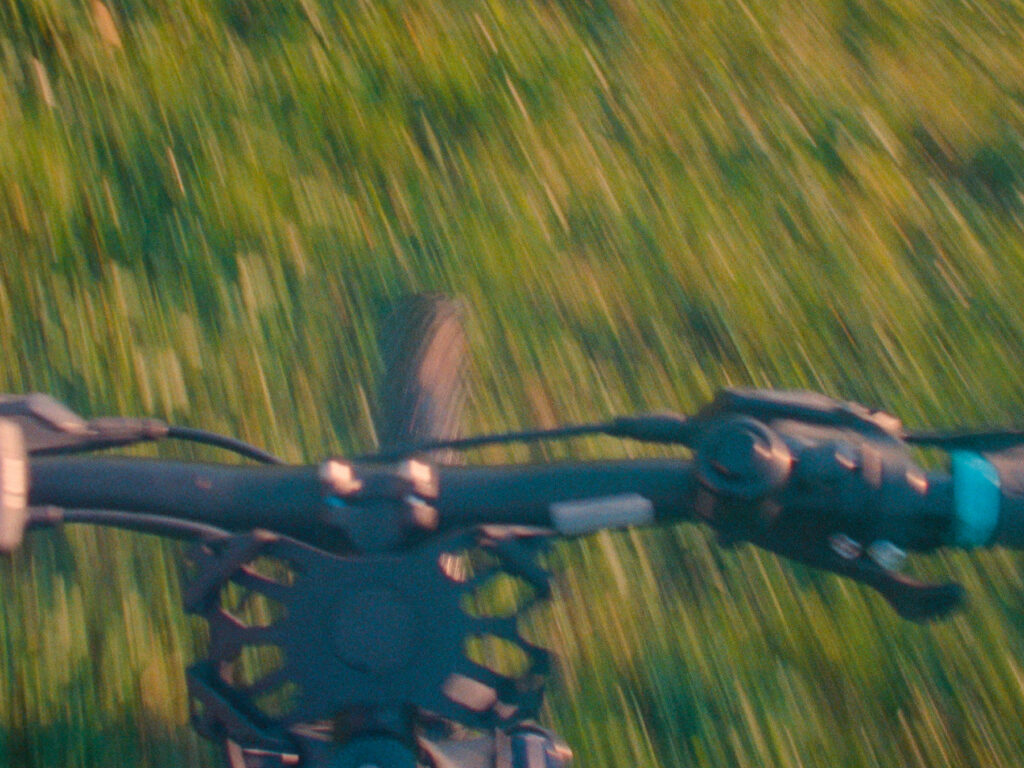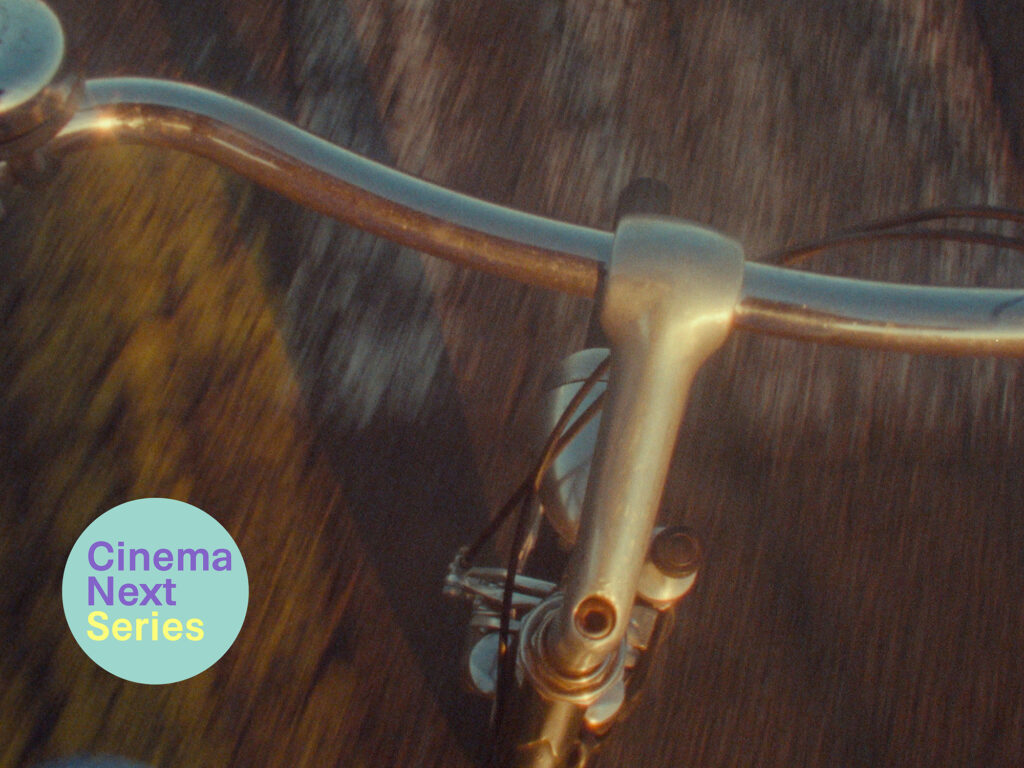Four rocking bike tours in Berlin, Tyrol and Vienna – and the ideas run their course. With Thin Ice, Simon Dalassera creates a meditative road film “through interior and exterior landscapes.” The short film can now be streamed for free on the Cinema Next series. We asked the director for an interview.
© Simone Dalassera — still from the movie “Thin Ice”
“Thin Ice” is the next installment in the Cinema Next series, which regularly features exciting films by local cinema talent for free on the Kino VOD Club streaming platform.
In your own words: What is “Thin Ice” about?
Simone Dalassera: In “Thin Ice” I wanted to try to trace the movement of thought on four bike rides in different places. A kind of journey of the mind through internal and external landscapes. I asked myself: Where are we actually looking from, if not from the middle, then from the continuous movement? The action in the film takes place while cycling. The places are Berlin, Tyrol and twice Vienna, they all have a certain meaning to me and are linked to a similar time.
These mental journeys fade into all sorts of corners, sometimes around people whose bikes I borrow, places I drive through, my family, the search for the perfect bike, etc. The gaze always remains on the handlebar and the ground directed. Front off screen. There are some images between chapters that indicate what is being said and are intended to make an impact.
How did you come up with the idea of making a movie based on cycling?
The idea came to me in Berlin at Tempelhofer Field when I was cruising along these former runways on a bicycle. This is also said at the beginning of the film. I was simply interested in the aimless movement of the moment: pedaling, then rolling, sometimes with one hand, sometimes with both hands, in circles and in loops. I really like that momentary, aimless thing – just driving somewhere without any intention. Anyway, it comforted me a lot inside at that moment, also because I wasn't feeling well that day. The silver handlebars flashed so beautifully in the sun that I thought I would have to shoot with my 16mm camera in one hand while I drove with the other. Just let the camera lens take a look for yourself. Then came considerations of thinking about movement, bicycles, moving images, and so on.
The writer and philosopher Jean-Jacques Rousseau wrote in his autobiography: “I can only think while I walk; Once I stop, I no longer think, my head only works with my feet at the same time. Does what Rousseau writes about walking apply to you when it comes to cycling?
Oh, thank you for that nice question! Yes, I see it that way too. This connection between walking and thinking. I often notice that I need to move to think. So there's that connection clearly. I also prefer writing using transportation. On the windows behind which the world passes. Or have to move while talking on the phone. Of course, this can also be transferred to cycling. When the movement becomes sinuous, I confront the poetry. That's why I like to walk around and let myself drift. If I wander off a bit, I usually discover something that interests me and appeals to me.
What I like about cycling is that when you go downhill, for example, you feel like you are flying. And then it's just great automation. You look at your body and at the same time you are the body that manages the mechanics of the bike.


You are working with analog film. This is not just an aesthetic device, but it also affects your appearance – the length of the shots is related to the length of the roll of film. Tell us a little about working with analog film. What is your interest in this film in general and specifically?
I more or less discovered filmmaking through analogue film and have defined it ever since. That is, I like to be guided by the film, and make certain decisions in advance: daylight or artificial light, sensitivity, etc. I like for a physical object to be of a certain length and for the image and sound to be combined in it to be separated from the recording. 30 meters of 16mm film corresponds to about 2.5 minutes of film time at 24 frames per second – this helped me organize my film. Matter is limited, and you don't want to waste anything, at most on purpose, because it is always a work with the moment in relation to the limits of matter. But these restrictions make me more focused and attentive.
Of course I also love the aesthetics of the film, which to me is largely defined by the grain. I don't see the world in 4K, but in grain. Excessive intensity hurts me. Analogue film, on the other hand, flatters us. I also like the fact that everything is slower. I like to be patient until I can see the images after development, appreciate the collaborative work in the lab, and strive for the goal of eventually being able to display the film in analogue format.
How did the shot or perspective that is largely seen in the film come about? You're not shooting straight ahead, but on the ground, the street, the ground.
There are several reasons for this. On the one hand, the clip on the floor gave me more space for my thoughts, and for the many texts I talk about in the film that also require attention. Looking ahead will be distracting and confusing. I want the viewer to focus and be able to imagine something. When I think about something while walking, I usually look at the ground. I wanted to somehow transfer that to cycling. On the other hand, visual language was of course also important to me. I wanted to pare things down and spice things up a bit and was simply interested in what was revealed in this static setting. In addition to the floor, we also see the handlebars of the bike. I hope different things become visible.

The film's title, “Thin Ice,” appears several times in the text. Can you tell us something about the meaning of the title of your film?
We are all walking on thin ice. It's all just a fraction away from the end – or not? It's amazing how good we still are at fooling ourselves. This transit is part of our life. If I became more aware of this, it would affect me a lot. Maybe he realized that we are not as strong as we always think. That we need each other. these things.
And then, of course, there's a kind of warning: 'Be careful if you continue here! 'This is very thin ice now!' something like that. And I kind of like that too, the rigor and the humility that comes with it. It reminds me of Jakob von Gunten's book ” by Robert Walser – a very important book for me. Too much weight and the ice collapses; too big a claim and the ice collapses. So perhaps there is also a skepticism towards things that are big and overwhelming. I am often very affected by small things and weightlessness, and Thin Ice is Also an expression of that.But these are all just guesses because I don't really know how and when I got the address.
Interview series in collaboration with Cinema Next – a young film from Austria.

“Travel aficionado. Certified problem solver. Pop culture guru. Typical writer. Entrepreneur. Coffee trailblazer.”







More Stories
The stage is being set for Taylor Swift.
Heidi Klum and Caro Daur & Co. also love these chic shirts for everyday wear.
Local premiere in Kirchstetten – noe.ORF.at